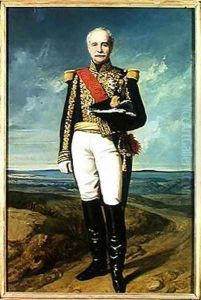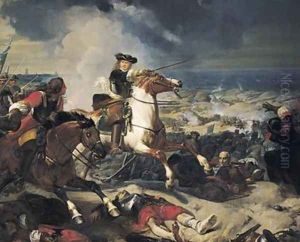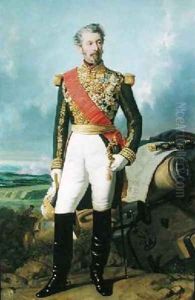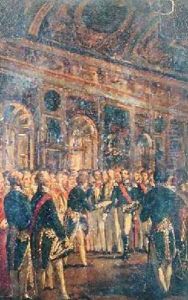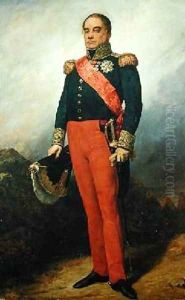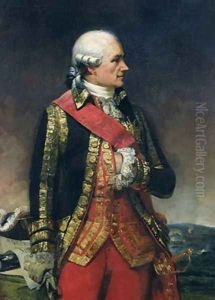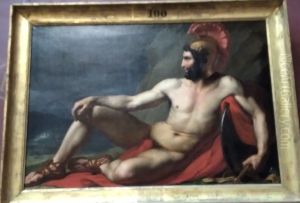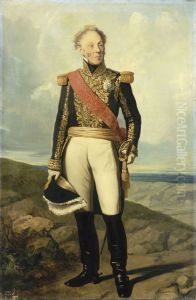Charles-Philippe Lariviere Paintings
Charles-Philippe Larivière was a notable French painter, born in 1798 in Paris, France. Coming from a family with artistic ties—his father was an engraver—Larivière was well-positioned to pursue a career in the arts from a young age. He studied under prominent artists such as Anne-Louis Girodet and Antoine-Jean Gros, both of whom played significant roles in shaping the neoclassical and romantic movements in French painting. This mentorship provided Larivière with a solid foundation in the techniques and themes that characterized French art in the early 19th century.
Larivière's career was marked by his adept skill in history painting, a genre that focuses on depicting events from the historical, religious, mythological, or allegorical narratives. His works are known for their detailed realism and emotional depth, often bringing to life the grandeur and drama of historical events. One of his most celebrated works is 'La Mort de Socrate' (The Death of Socrates), which reflects his ability to combine historical accuracy with poignant storytelling.
Throughout his lifetime, Larivière received numerous commissions for public and private works, contributing significantly to the visual culture of his time. He was also involved in several important projects, including the decoration of public buildings and participation in the restoration of French monuments, which underscored his commitment to national heritage and the arts.
In addition to his painting, Larivière played a critical role in the artistic community as a teacher. He imparted his knowledge and skills to a new generation of artists, ensuring the continuation of the traditions and techniques he had helped to shape. His influence extended beyond his immediate circle, as his works and his approach to art were admired and studied by artists and art lovers alike.
Charles-Philippe Larivière passed away in 1876, leaving behind a legacy that not only encompasses his contributions to French art but also his role in the broader narrative of 19th-century European painting. His work remains a subject of study for art historians and continues to be appreciated by audiences for its beauty and historical significance.

